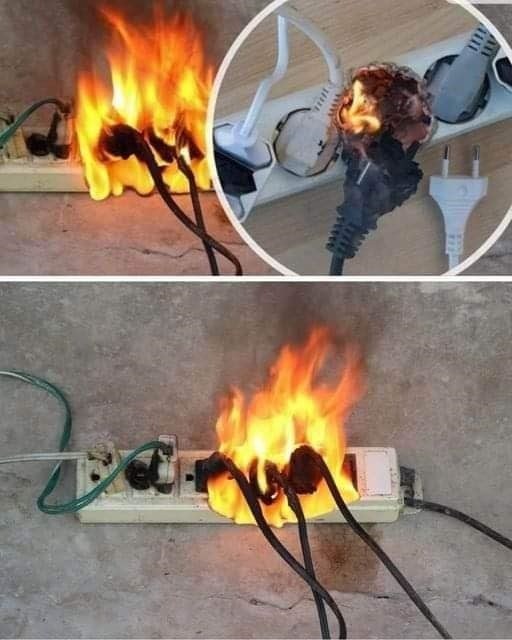Ensuring Power Strip Safety: Essential Dos and Don’ts
Power strips are an integral part of modern life, seamlessly fitting into our homes, offices, and educational institutions. They provide a practical solution for powering multiple devices from a single outlet, allowing us to manage our electronic needs easily. However, the convenience of power strips comes with significant responsibilities. Misusing power strips can lead to severe hazards, including electrical fires. Understanding the safety guidelines surrounding power strips is not just a suggestion; it is crucial for protecting your home and ensuring the safety of everyone within it.
Understanding Power Strip Limitations
Each power strip is designed with a specific maximum capacity, usually indicated in amps or watts on its label. This information is essential; exceeding the designated limits can lead to overheating, which poses a significant fire risk. Overheating can damage the strip’s insulation, potentially causing sparks that might ignite a fire. To prevent such dangers, it’s essential to familiarize yourself with the power strip’s specifications as well as the wattage of the devices you plan to connect. For example, a power strip rated for 15 amps can support devices that total up to 1800 watts. If you connect devices drawing more power than that, you risk overheating the strip and possibly starting a fire. A proactive approach to understanding these limits can prevent dangerous situations from arising.
Devices to Avoid Connecting to Power Strips
Power strips might seem versatile, but there are specific appliances that should never be plugged into them due to their high power demands. Connecting high-wattage devices to a power strip can lead to dangerous situations, including fire hazards. Here are some devices that should always be directly connected to wall outlets:
- Ovens and Microwaves: These appliances require substantial power, especially during peak cooking times, and can easily overload a power strip.
- Refrigerators and Freezers: Their compressors can draw significant bursts of energy, making them unsuitable for power strips.
- Washing Machines and Dryers: Heavy-duty laundry machines need dedicated outlets to handle their motor loads effectively without risking an overload.
- Coffee Makers and Toasters: Even smaller kitchen appliances can generate significant heat and consume a considerable amount of power when in use.
Plugging any of these devices into a power strip could not only trip circuit breakers but, in the worst-case scenario, could lead to catastrophic fire incidents. Always ensure that high-wattage appliances are plugged directly into a wall outlet to avoid any risks.
The Risks of Heating Devices
One of the most significant safety concerns in households is the improper use of heating devices connected to power strips. Space heaters, for instance, continuously consume a large amount of electrical current, easily exceeding a strip’s capacity. Fire safety authorities have noted that heaters plugged into power strips are a leading cause of residential electrical fires. To enhance safety, it is advisable to connect heating appliances directly to a wall outlet, ensuring they are monitored while in operation. Never leave space heaters unattended as this simple precaution can significantly reduce the risk of fire incidents in your home.
The Hazard of Daisy-Chaining Power Strips
In an effort to increase the number of available outlets, some individuals resort to daisy-chaining power strips—plugging one strip into another. This practice is not only dangerous but is highly discouraged by safety experts. Each power strip is designed with a specific capacity; when multiple strips are interconnected, the resultant load can easily exceed what the first strip or the circuit itself can manage. For example, if you plug a second power strip into a first strip that’s already at its maximum capacity, you elevate the risk of overload and potential fire hazards. Instead of daisy-chaining, consider using a properly rated extension cord or consult a qualified electrician to install additional wall outlets to meet your power needs safely. This can facilitate safer power management without the risks associated with daisy-chaining.
Safeguarding Sensitive Electronics
While devices like computers, televisions, and gaming consoles may not draw as much power as larger appliances, they are particularly vulnerable to power surges. Such surges can occur due to various factors, including lightning strikes or electrical grid issues. To protect these sensitive electronics, it’s best to plug them directly into wall outlets or use surge protectors specifically designed to handle voltage spikes. This practice is especially critical in areas prone to electrical fluctuations or severe weather conditions, where sudden power surges can be more common. By employing surge protectors, you not only safeguard your electronics but also prolong their lifespan and enhance their performance. Protecting your investment in technology is essential for maintaining functionality and reliability in your daily life.
Practical Safety Measures and Best Practices
To ensure optimal safety while using power strips, several practical tips should be observed:- Regularly inspect your power strips for any signs of wear and tear, including frayed cords, scorch marks, or loose sockets. Any visible damage should prompt immediate replacement of the power strip.
- Avoid placing power strips under carpets or in confined spaces where heat can build up and pose a fire risk. It’s essential to allow for adequate airflow around the strip.
- Whenever possible, unplug power strips that are not in use to reduce the chances of overheating. Unplugging can also prevent energy waste and extend the life of your devices.
- If you find yourself consistently needing more outlets, consider consulting an electrician for permanent solutions rather than relying on temporary power strips.
Conclusion: Prioritizing Electrical Safety
Power strips can serve as valuable tools for managing your electrical devices, but they should never be viewed as substitutes for proper wiring or as a safe harbor for heavy-duty appliances. By adhering to safety guidelines—such as avoiding high-power devices, steering clear of daisy-chaining, and verifying each strip’s capacity—you can significantly reduce fire risks and maintain a secure home environment. Ultimately, electrical safety begins with awareness; a little caution can go a long way in protecting your home and family from potential hazards. Prioritizing safety is not only smart but essential in a world increasingly reliant on electrical devices.

















